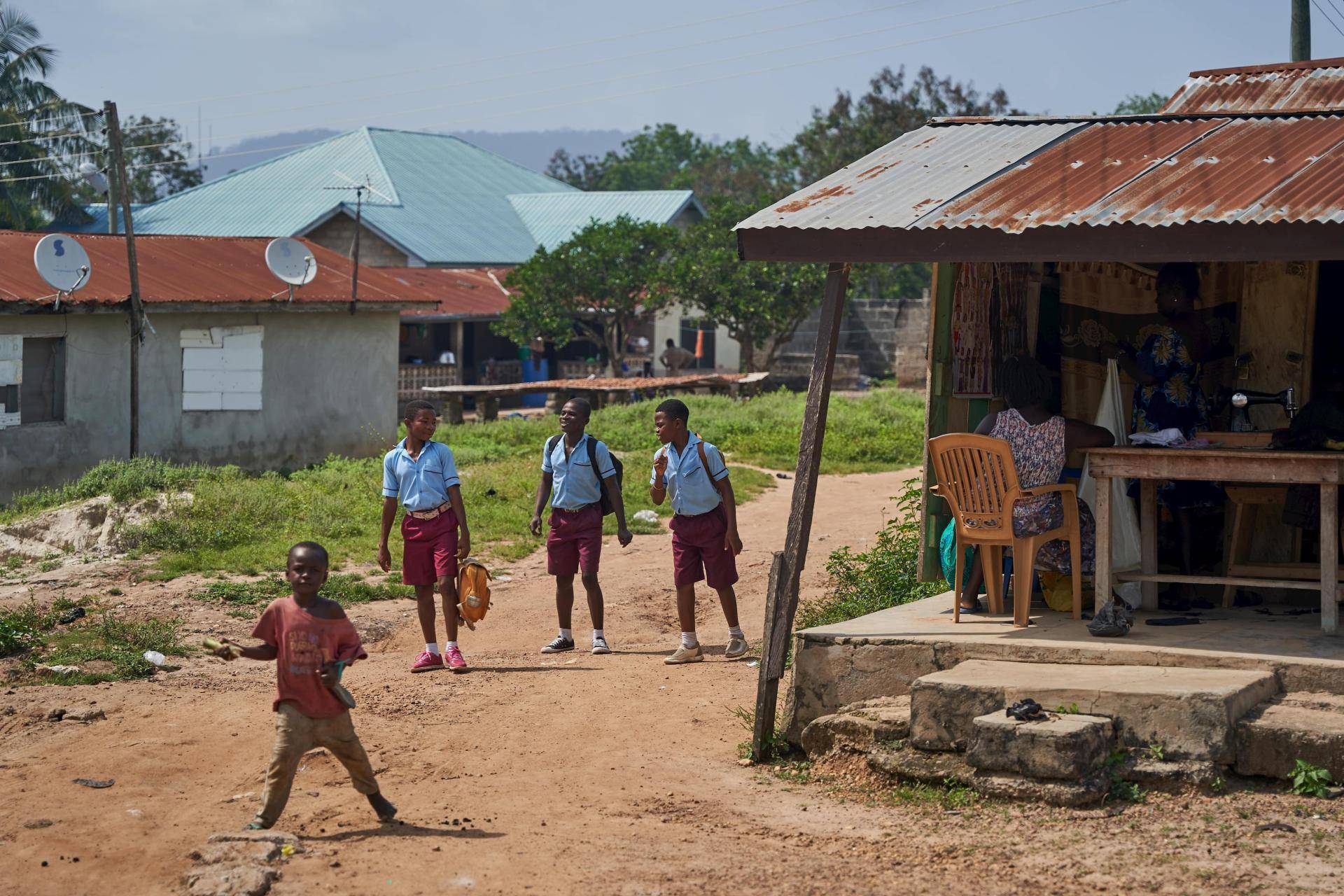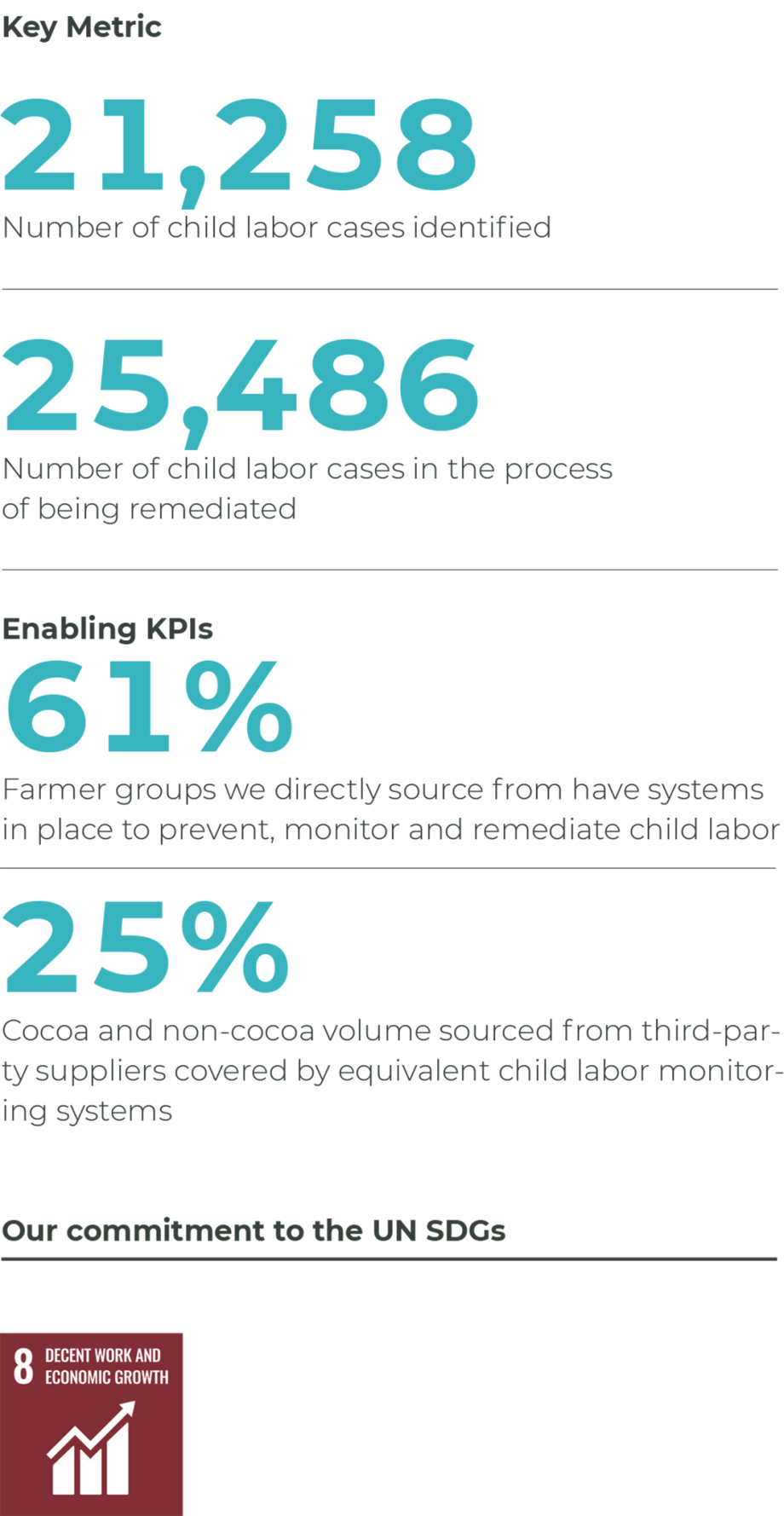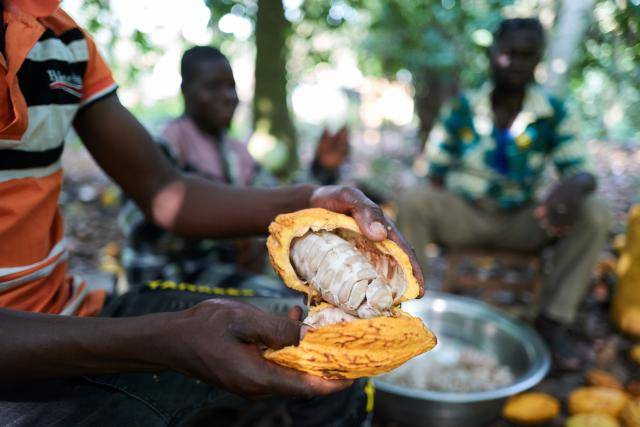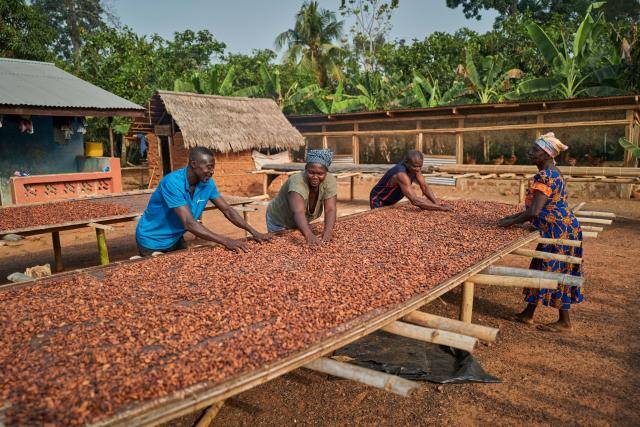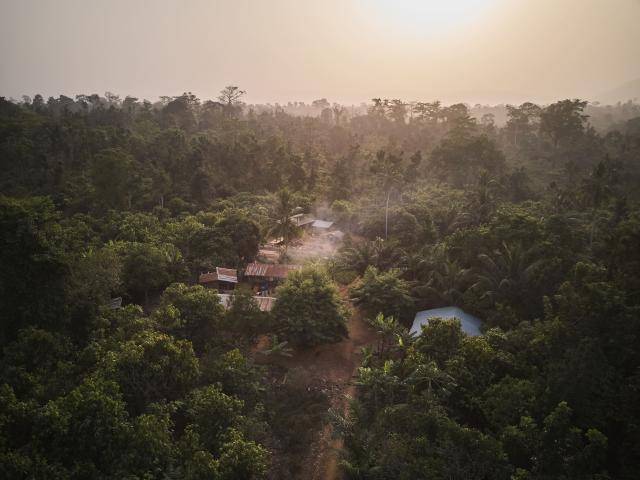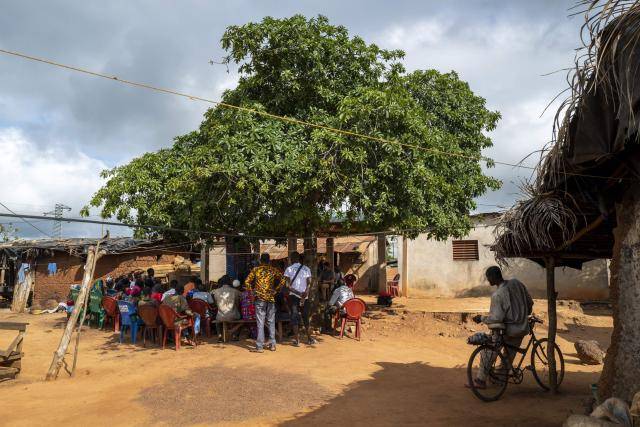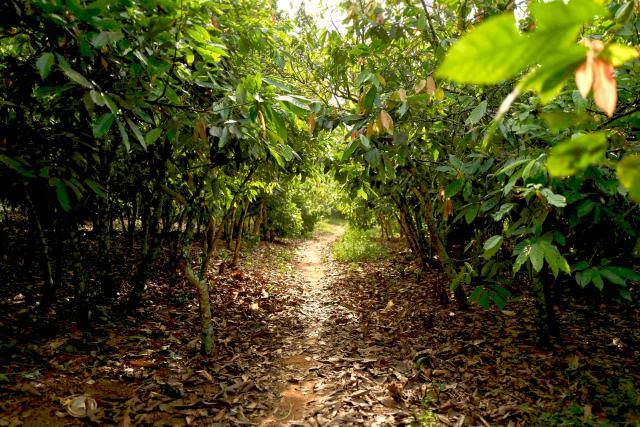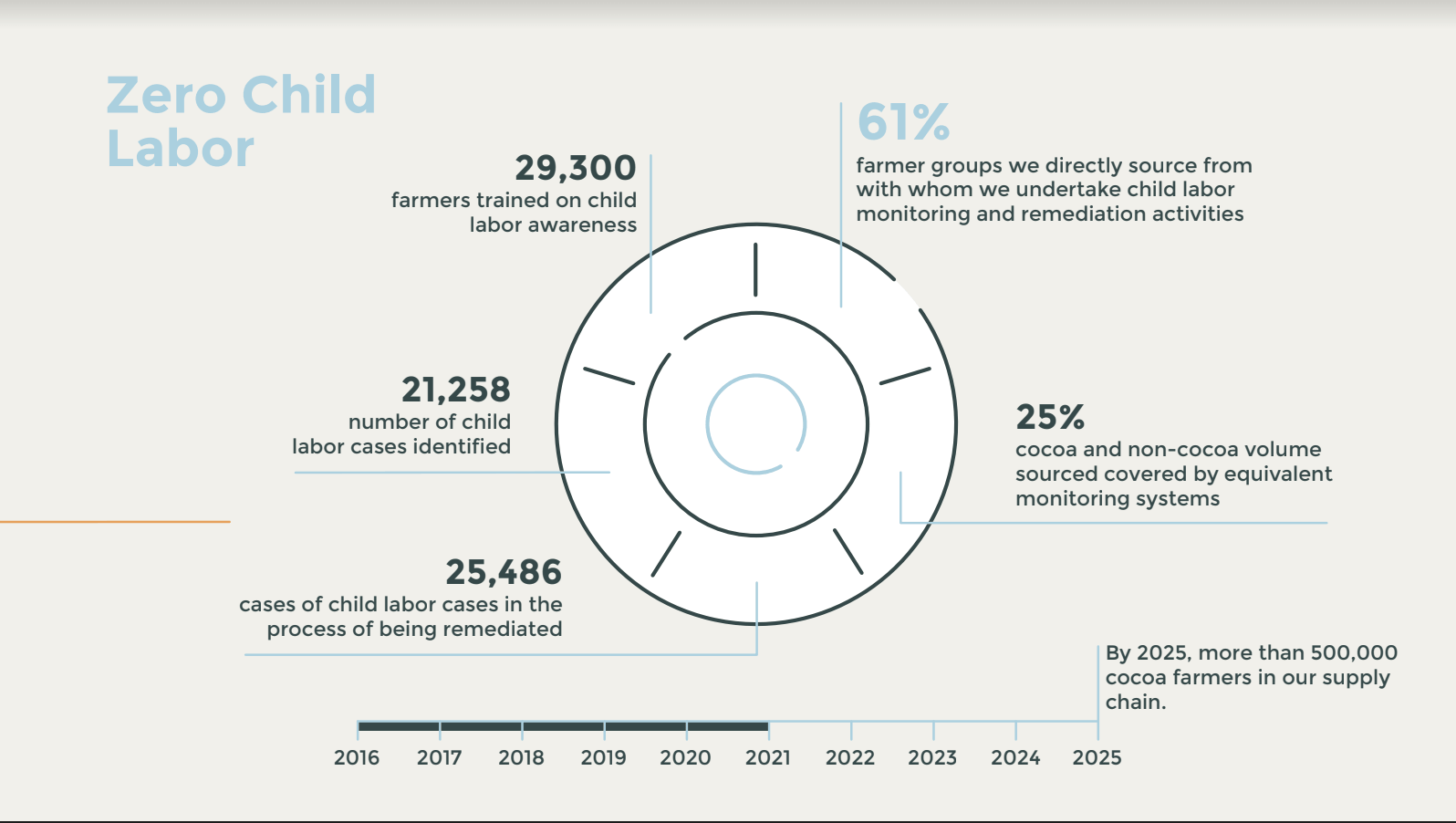
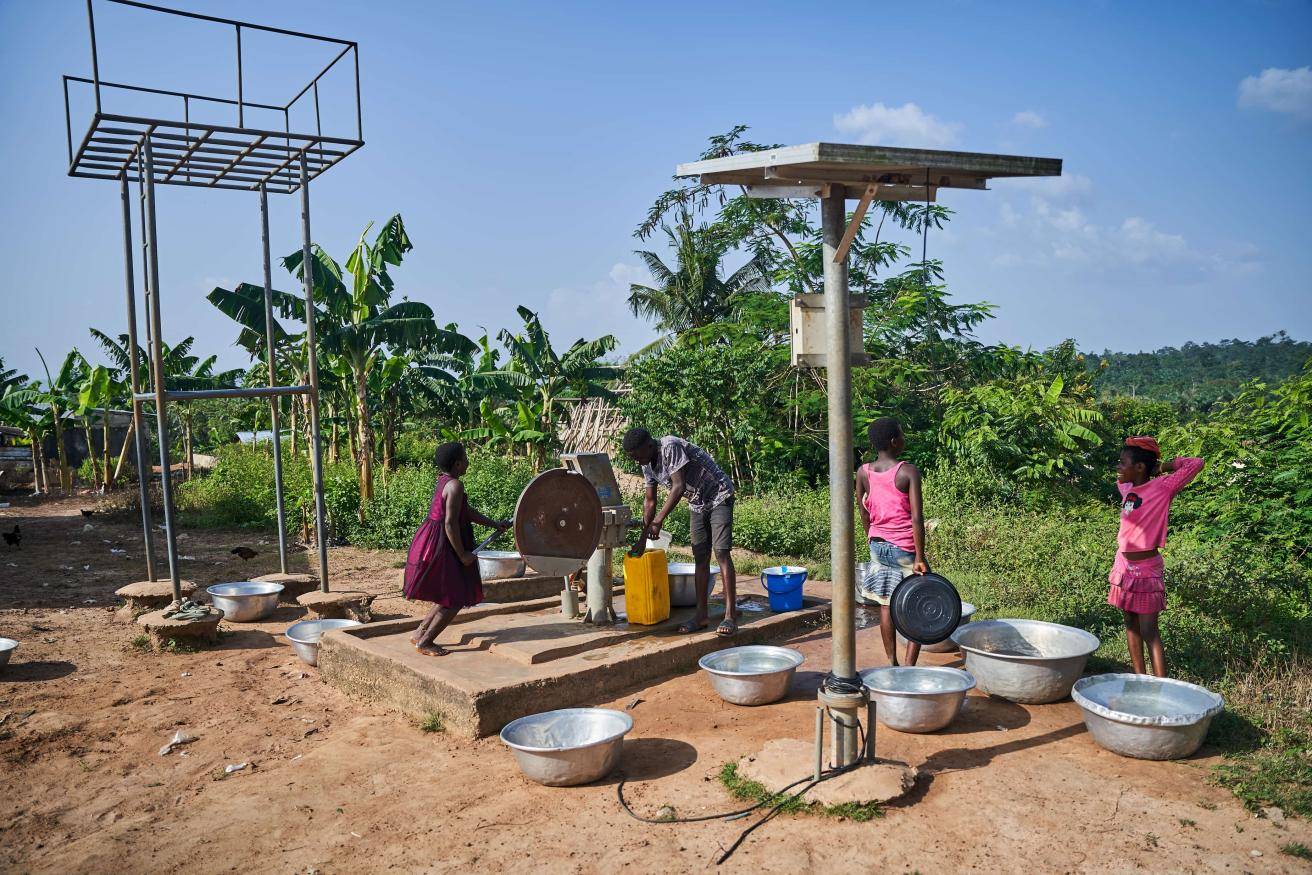
Our approach
In June 2021, a report published by the European Commission on ending child labor in Côte d’Ivoire and Ghana states that there is a need for high level collaboration among implementers at the local level and a need to improve overall institutional structure and collaboration. In addition, it noted that current efforts to eliminate child labor are not sufficiently and structurally embedded within a functioning institutional support system and called for a wider systems-based approach1. We fundamentally believe that enforcing a strong regulatory framework on human rights protection in origin countries should be part of a broader effort to strengthen an enabling environment in cocoa farming on the ground. This approach should go hand in hand with the due diligence legislation in consuming countries, which can be fully effective only if sector-wide traceability is established, to monitor both environmental and human rights protection.
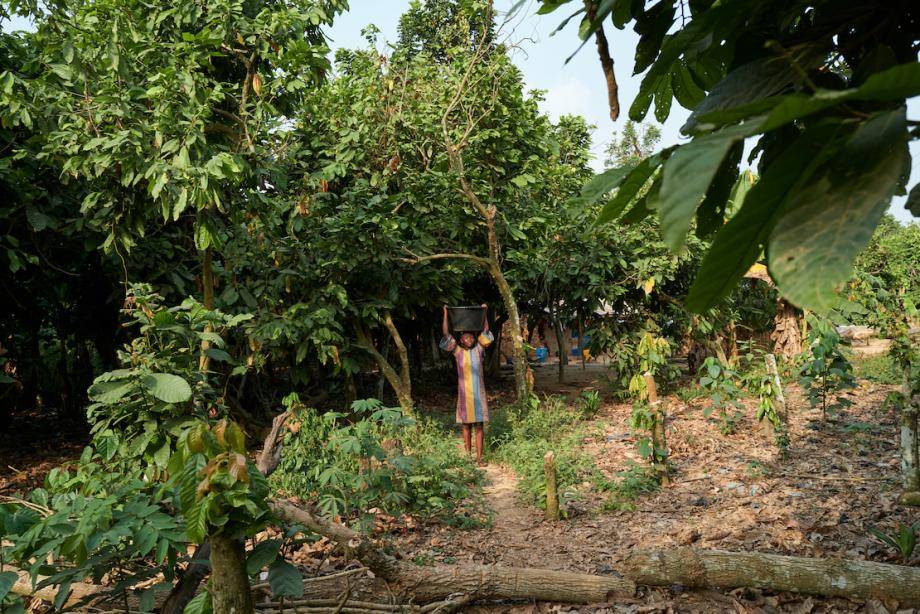
A child-centered approach starts at the local level, engaging with children, parents, families and community members to create empowered communities.
Our approach to eradicating child labor is based on child-centered systems strengthening and applying data driven risk analysis capabilities under the overarching framework of human rights due diligence, which closely follows the OECD Guidance for Responsible Business Conduct. In 2020, we partnered with Embode, the internationally renowned social protection and human rights consultancy working with NGOs, intergovernmental organizations and industry, to undertake an in-depth evaluation of our progress to date and help us take the next strategic action towards achieving zero child labor. Subsequently, in 2020/21 we finalized our Child Labor Roadmap which was developed to define clear internal milestones between 2020 and 2025 to guide planning, resources, implementation and stakeholder engagement.

Child Protection Committees (CPCs) are composed of trusted community members, and are in a unique position to engage with families. CPC members identify and support children at risk of being engaged in child labor and support remediation and referral processes in collaboration with local public authorities.
A child-centered approach starts at the local level, engaging with children, parents, families and community members to create empowered communities to help their own development and make lasting change for the future. This approach relies on a framework of collaborative action from all stakeholders. It includes developing community action plans, building the capacity of local authorities to better support families, and stepping up local and regional advocacy to increase farmer empowerment. This approach relies on a framework of collaborative action from all stakeholders. It includes developing community action plans, building the capacity of local authorities to better support families, and stepping up local and regional advocacy to increase farmer empowerment. In 2020/21, we continued our work with Child Protection Committees (CPCs) in cocoa farming communities in Ghana, Cameroon and Indonesia.
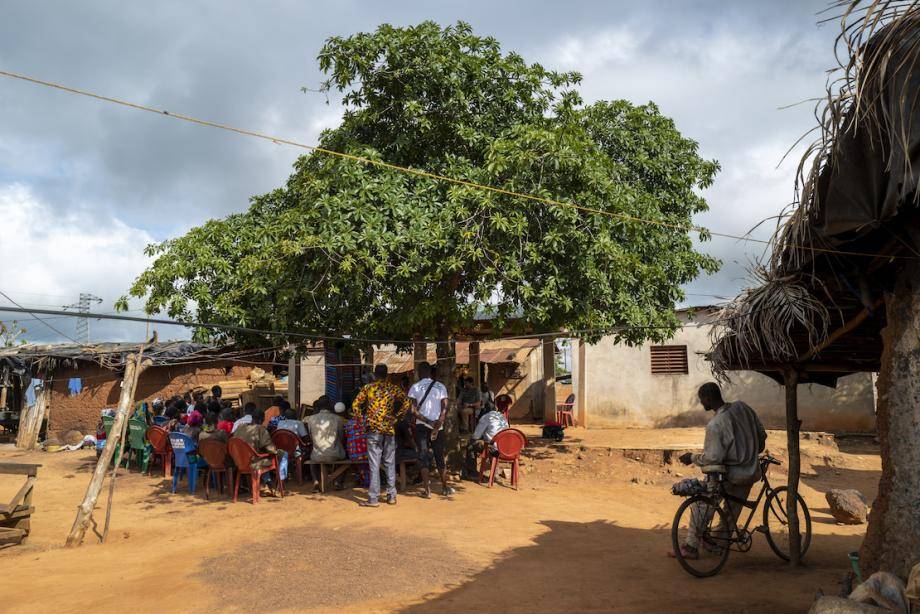
This program brings together a partnership of district and local-level government agencies, social welfare specialists, community planners, teachers, and local religious leaders, with the purpose of preventing child labor and protecting child rights. Structural or contextual issues, for example, a change of revenue source in families that were not considered high risk at the moment of monitoring, or closure of schools due to COVID-19, can lead to children being subjected, or returning to, child labor. Therefore a community-centric approach is essential to tackle comprehensively child labor, given the high context volatility that can expose children to ongoing child labor risks.
Our measured impact
There is an estimated 1.56 million children involved in child labor for cocoa cultivation in Côte d’Ivoire and Ghana2. The first step to effectively tackle child labor is to locate it. Therefore, we continue to monitor and identify cases of child labor rigorously and with intent. In 2020/21 we found 21,258 (–7%) cases of child labor in the fiscal year under review.
Implementing individualized remediation interventions for a specific child and family takes time – both to build a relationship with the family and determine the best course of action to address the case of child labor. According to International Cocoa Initiative (ICI)3 recommendations, a case can only be considered remediated when two consecutive visits have shown that the child has no longer been engaging in child labor. If a child is found in child labor during any of these visits, we will develop a new remediation plan adapted to the needs of the child and continue following up on the case 3 to 18 months until fully remediated.
This year, 25,486 (+412%) of the reported cases we found in previous years, are now under remediation. This large increase is the result of being able to more readily travel to communities and families and implement remediation activities more quickly than in 2019/20.
This year, the number of identified child labor cases considered remediated on the grounds that the child has not been found performing child labor over two consecutive monitoring visits, between 3 to 18 months, is 362 cases (+8%). In addition, we are continuing to implement our monitoring and remediation systems which cover 237 (+116%) farmer groups, including 220,878 farmers in Côte d’Ivoire, Ghana, and Cameroon.
The percentage of the farmer groups we directly source from with whom we undertake child labor monitoring and remediation activities is 61%.
2 Assessing the Progress in Reducing Child Labor in Cocoa Growing Areas of Côte d’Ivoire and Ghana
